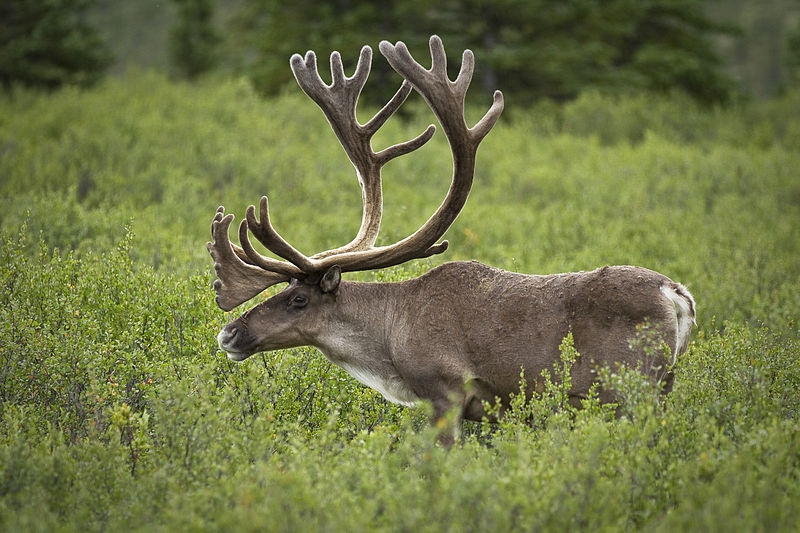
Features
Forestry Management
Harvesting
Protect caribou, jobs by re-examining federal strategy: FPAC
Aug. 22, 2017 - Canada’s leading forest products companies and the 230,000 people we employ in hundreds of communities across the country are urging the federal government to give serious thought to adjusting the procedures and timing of the Caribou Recovery Strategy to achieve a more balanced and sustainable way forward for all.
August 22, 2017 By Derek Nighbor Forest Products Association of Canada

We believe that the current process could jeopardize thousands of jobs in rural and northern Canada and the well-being of hundreds of communities – while not reaching the important caribou recovery goals that we all want to achieve.
In a recent letter to Natural Resources Minister Jim Carr and Environment Minister Catherine McKenna, we asked that the federal government take a step back and reconsider the processes associated with the recovery strategy in order to ensure that the most current science and socio-economic impacts are fully taken into account.
Unless the current approach is altered, the positive outcomes we are all seeking for caribou will not be realized and a number of sustainable forestry operations will be put at risk, along with thousands of the well-paying jobs they support across rural and northern Canada.
At a time when our sector is dealing with significant duties from softwood lumber and supercalendered paper trade disputes, imposition of new costs related to carbon policies, and devastating forest fires and pest outbreaks, our industry’s competitiveness and future success is dependent on a plan that balances important environmental and economic outcomes.
Our sector prides itself in the positive environmental benefits we achieve every day. Indeed, the detailed forest management plans that our companies invest in, develop and implement under provincially-mandated legislation and regulations are built to support biodiversity, and our harvesting practices are tailored to meet the unique realities of each forest area.
The caribou is an iconic species, and all Canadians, including those of us who work in forestry, want to ensure that all reasonable measures are taken to help the species recover. Since caribou was designated as threatened, we have invested substantially in programs across the country to improve our collective understanding of why some herds are faltering. Believing that solutions must be science-driven, we have spent millions supporting a range of initiatives in partnership with leading researchers, environmental groups and community partners over the last few years.
Under the current federal action plan for caribou recovery, there is no clear and consistent mechanism for the provinces to factor this extensive research into their caribou range plan development. Instead, provinces are being obliged to meet disturbance and buffer thresholds set out in the federal plan, which limits flexibility in local decision making and stands to, in many cases, unnecessarily prohibit access to vast tracts of the forest. If we continue down this road, it is not clear that caribou populations will rebound. We do however know that the livelihoods of tens of thousands of rural and northern Canadians will be impacted.
One of the more specific concerns we have is related to the broad federal application of a 65/35 non-disturbance/disturbance threshold — one measure for determining the amount of human and natural activity thought to encourage stable or increasing caribou populations within a range. Some provinces have interpreted this guidance, introduced over 6 years ago, as an absolute rather than as a general benchmark that can be adapted to regional conditions. No two regions of this country exactly the same and the broad application of this model poses a challenge to the best local outcomes.
We have asked the federal government to undertake an urgent review of the current process with a view to ensuring that the provinces do not move ahead with their caribou range plans with undue haste in an effort to meet the federally imposed deadlines. This could be addressed by the federal government rethinking the range plan deadlines in conjunction with provinces to ensure we get the outcomes right for caribou and forest communities.
It is critical that the government base caribou recovery decisions on a thorough scientific assessment of all causes of caribou decline, from human and natural disturbance to climate change, predation, pathogens and disease.
In fact, we know that in protected areas like Banff and Jasper National Parks, where there is no industrial activity, that caribou populations are in serious decline. Same can be said for herds in the northern parts of Quebec and Labrador where there is little or no industrial activity. Futhermore, recent information in Ontario and Alberta shows that in some ‘highly disturbed’ areas, caribou populations are showing signs of a rebound.
This is a very complex issue and multiple factors are at play. Our request is a simple one. That the federal government take the time to get this right the first time; ensures it is working with the provinces with the best and most up-to-date science that factors in local conditions and realities; and that a clear socio-economic analysis of policy options is completed for every region, so we can balance critical environmental and economic outcomes. The future of caribou and our rural and northern forest communities depend on it.
Derek Nighbor is the CEO of the Forest Products Association of Canada.
Print this page